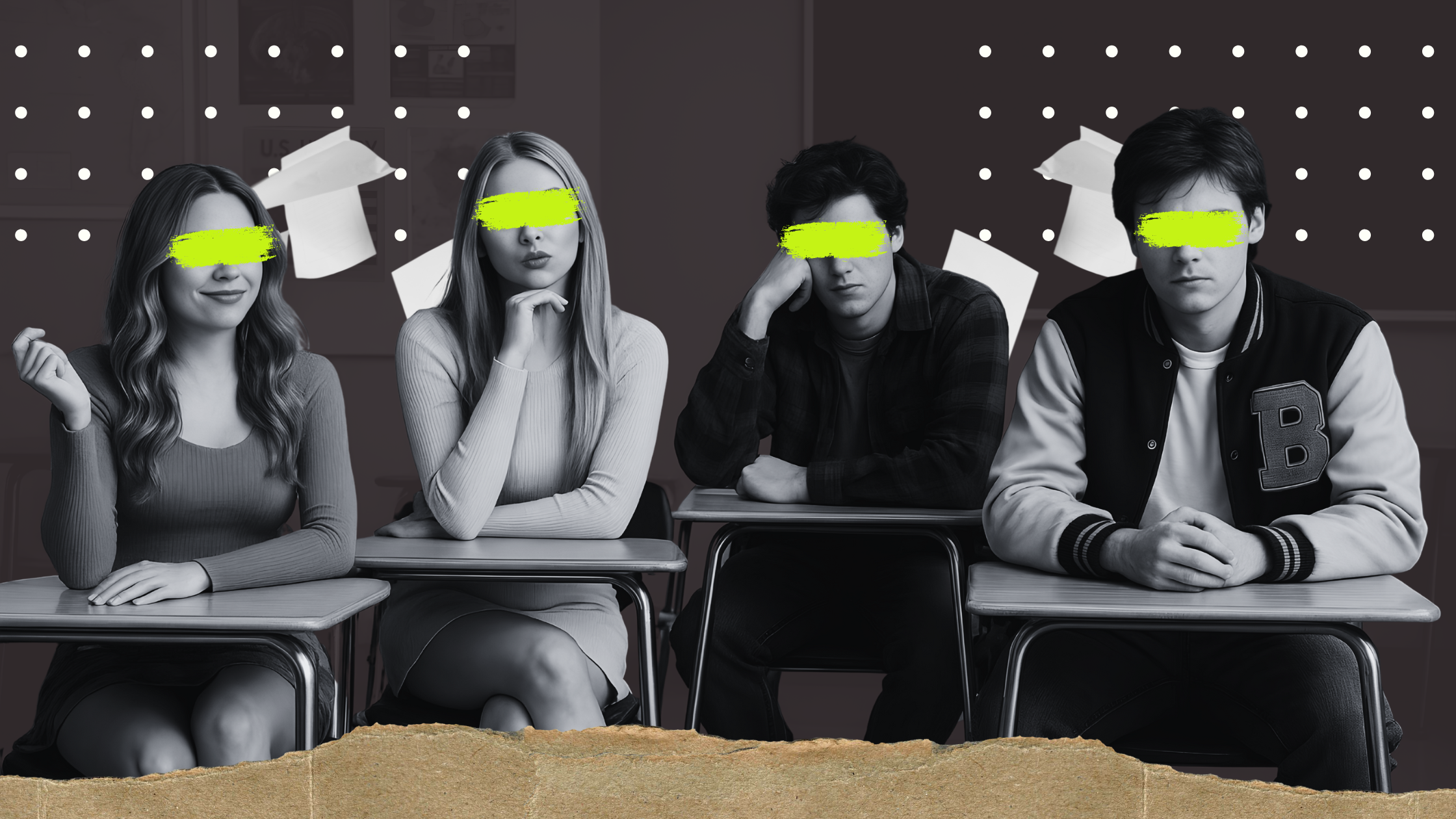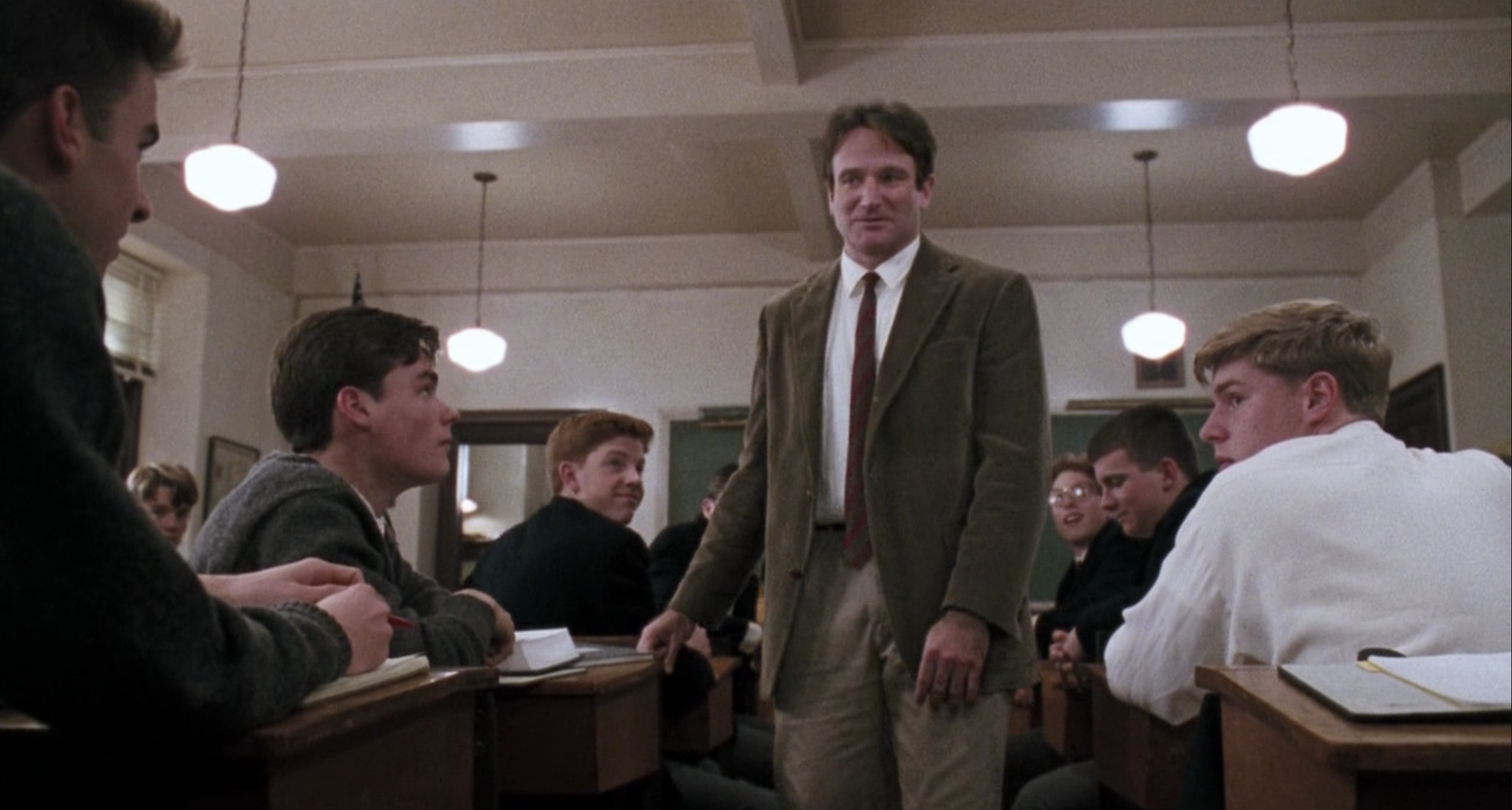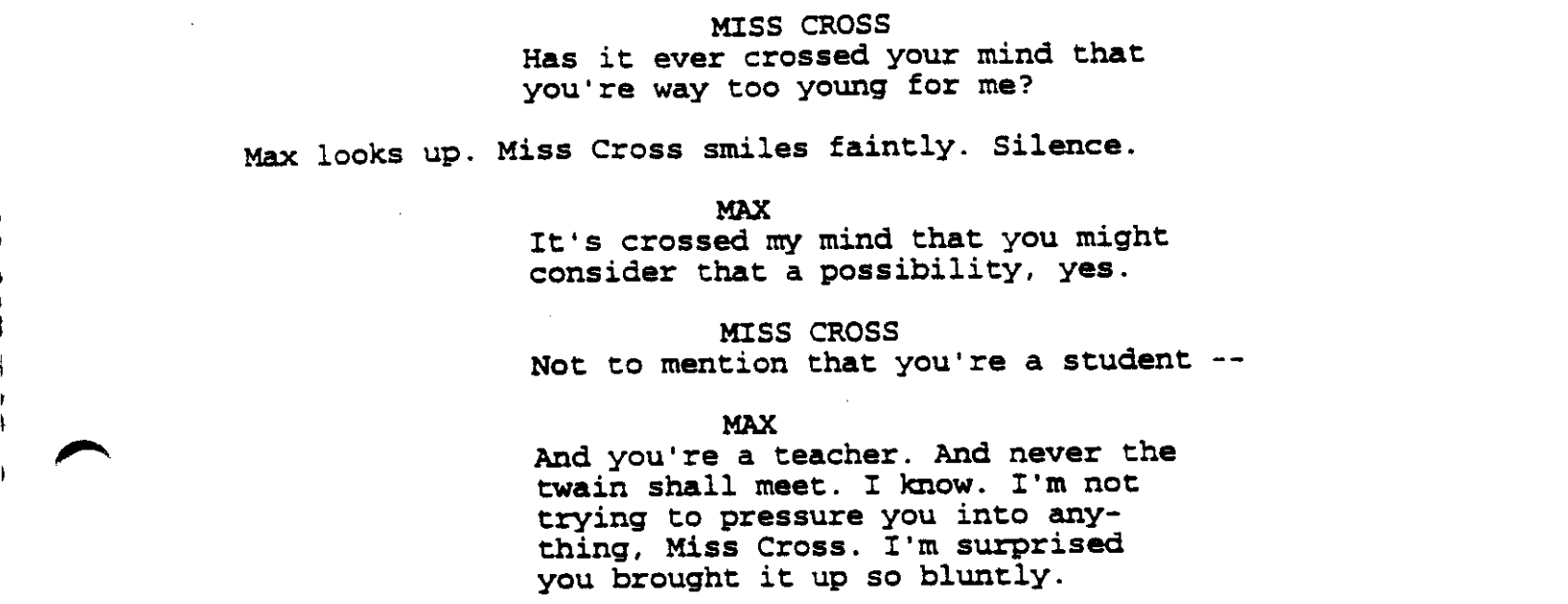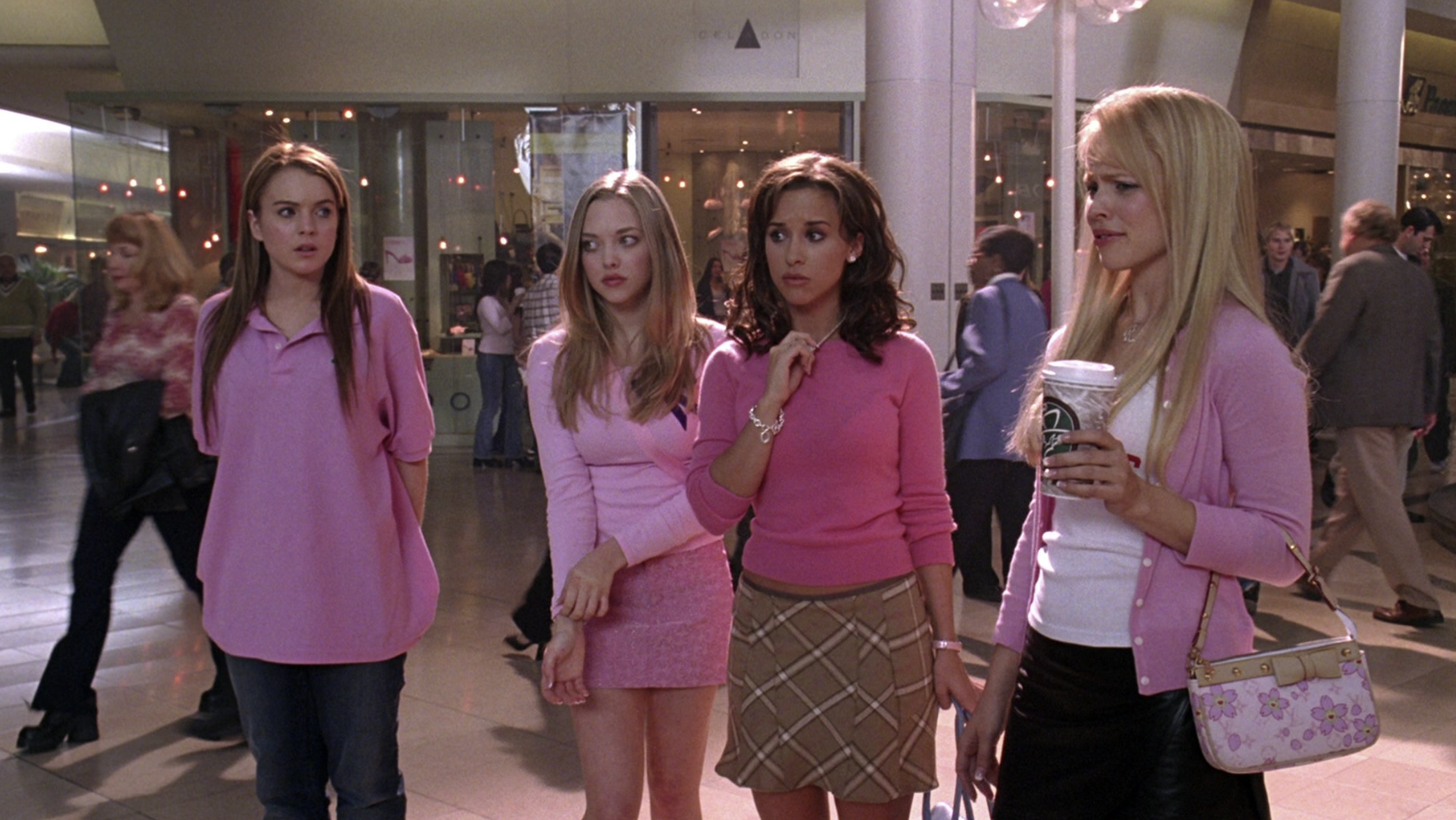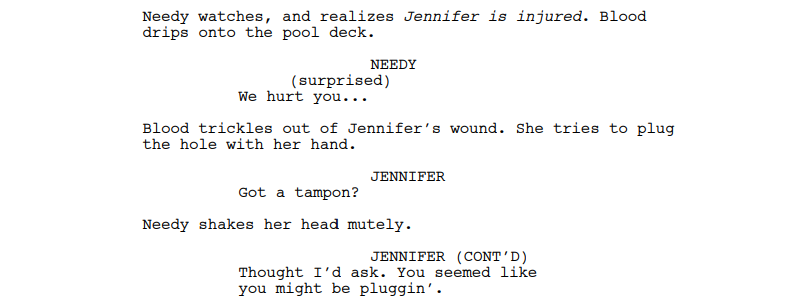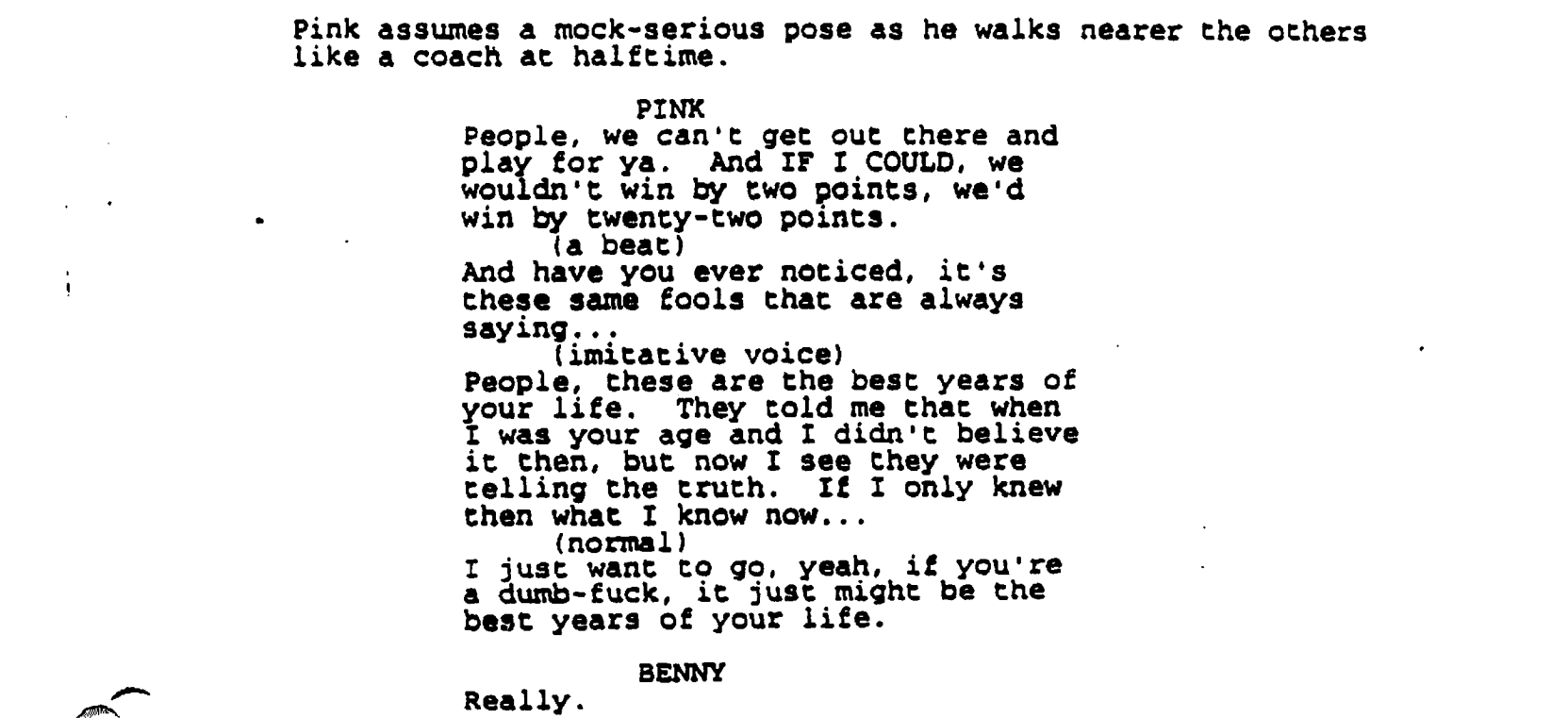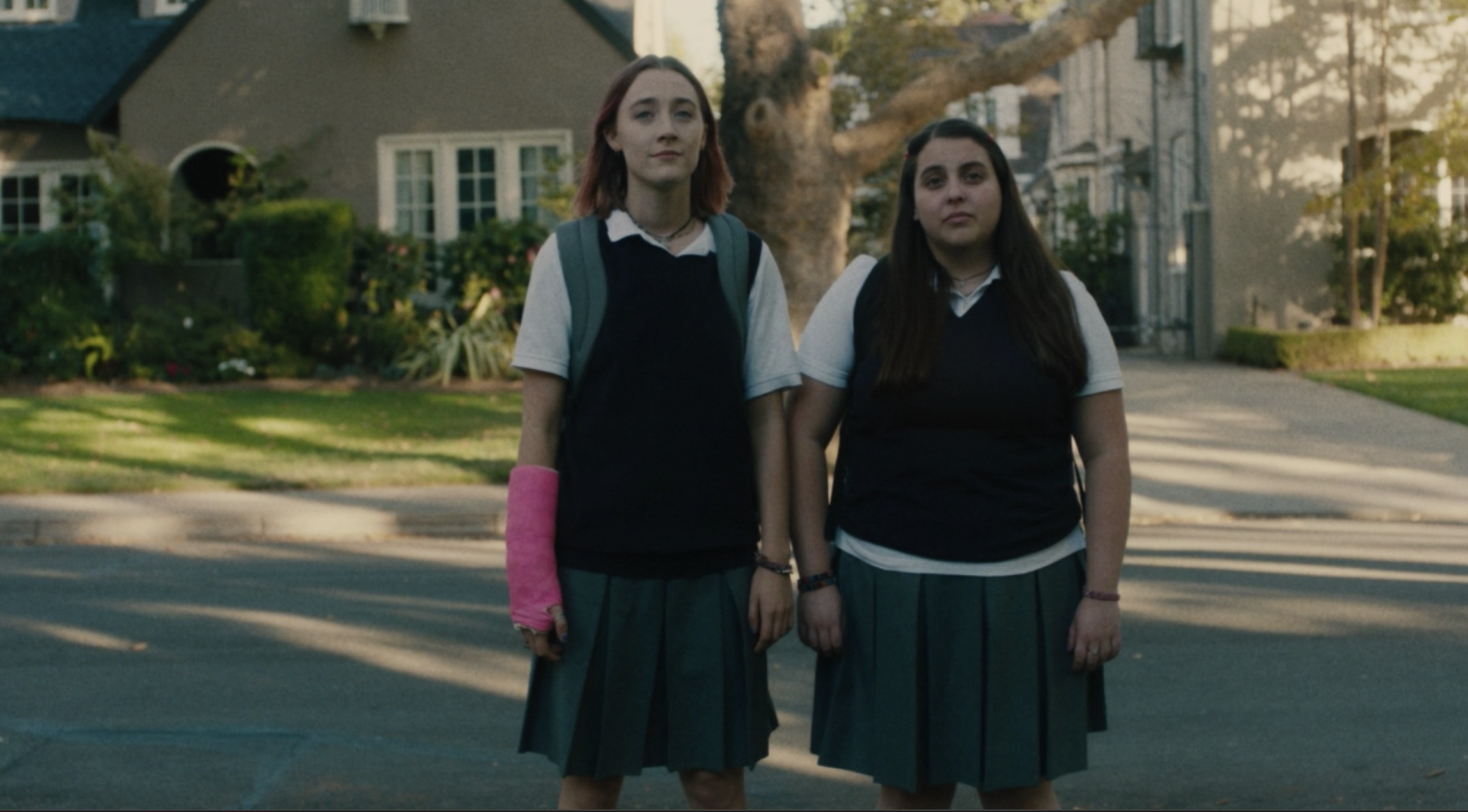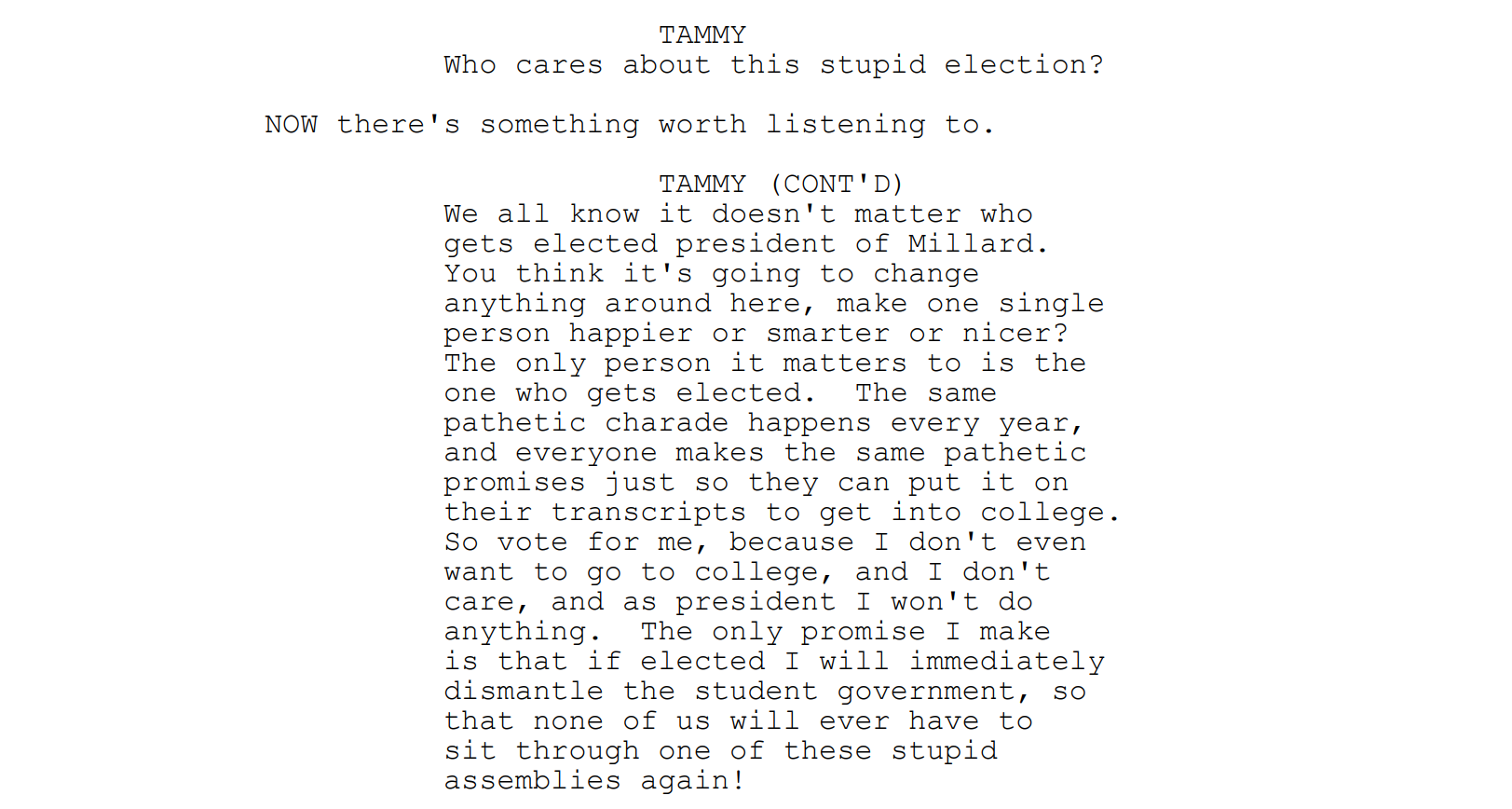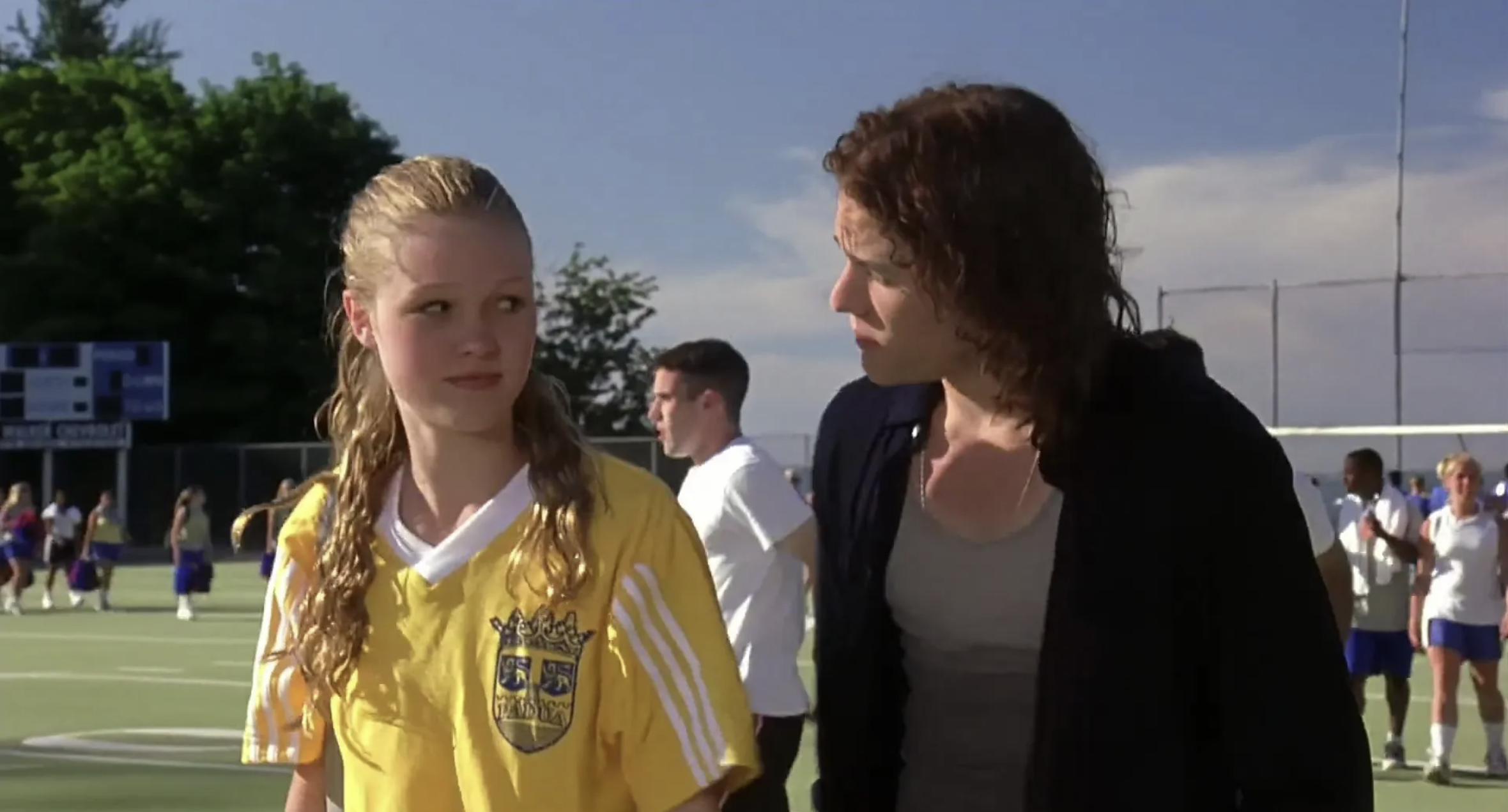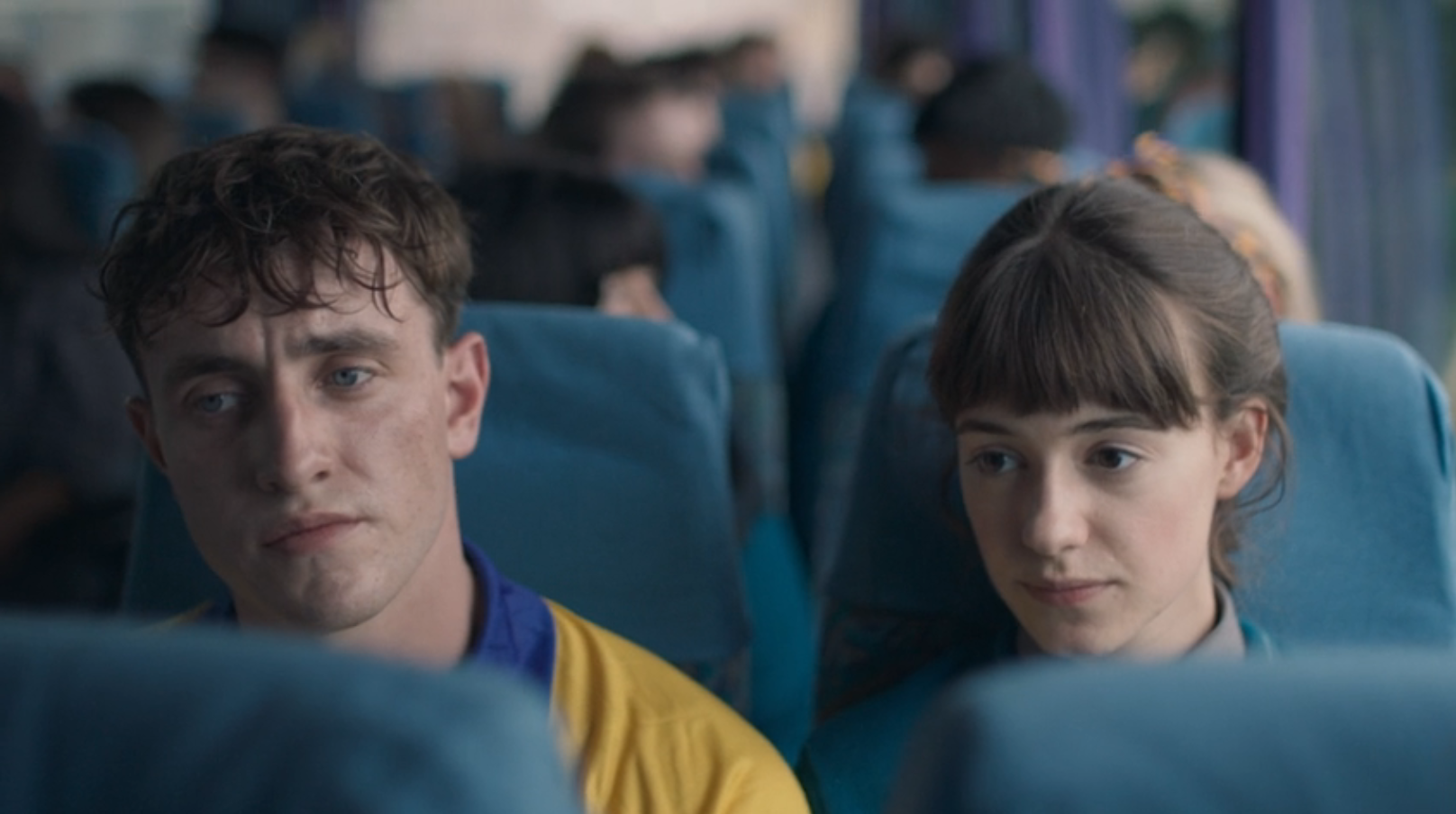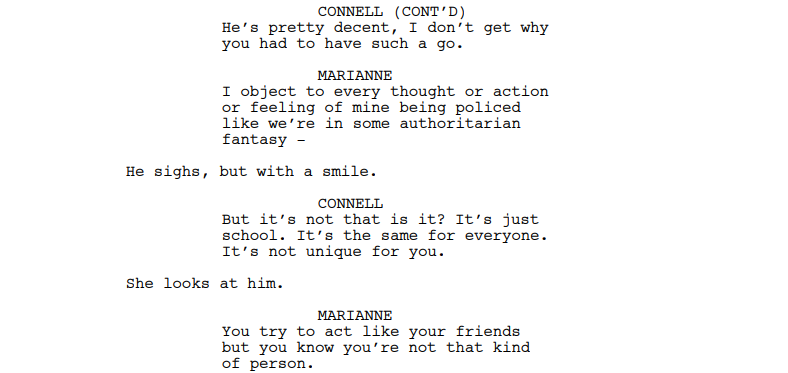15 Best High School Screenplays
Disclaimer: Although these stories take place in a High School, some of the films are rated R.
The humble high school must top the list of Most Cinematic Settings, beating out the American diner, the basement, or the cabin in the woods. Few locations are as narratively rich or versatile.
It’s a setting we’re all familiar with: the same archetypes, social structures, sports tryouts, mean teachers – and bad cafeteria food – are near universal experiences. They’re instantly recognisable, relatable, and likely the scene of some of the most dramatic moments of our lives… or at least they felt that way at the time.
Author Julian Barnes said “When we are young and sensitive, we are also at our most hurtful.” Within these four walls, we experienced our own coming of age, first clashes with authority, early pangs of love, the cruelty of others, unrequited crushes, exposure to gaps in class… all the raw material of great storytelling, now tinged with nostalgia and retrospect. And this is where great stories are told.
Not to give you homework flashbacks, but here are 15 screenplays worth studying. A few ground rules: each one, in some way, revolves around high school. That doesn’t necessarily mean it takes place entirely on school property. I’ve omitted films that simply feature school age characters and, for the most part, sports movies like Karate Kid, since I feel like they’re almost a genre of their own. Okay class, let’s begin.
Dead Poets Society (1989) - Tom Schulman
Let’s begin by taking a look at Schulman’s Dead Poets Society, a film that must be 95% school interiors. A poignant drama set in a rigid 1950 prep school, about an unorthodox English teacher inspires his students to embrace poetry, individuality, and courage. Schulman’s screenplay stands out for its layered characters, emotional precision, and the way it weaves rebellion, conformity, and the transformative power of art.
I’ve led with this because school is so often portrayed as a cruel institution and teachers as harbingers of doom – but Schulman’s English teacher, Keating, is a passionate figure capable of profound empathy. It’s a feel-good story that leaves you hollowed out. Its enduring strength lies in its honesty: a lyrical, human reflection on the timeless tussle between individuality and conformity.
Rushmore (1998) - Wes Anderson / Owen Wilson
Relationships with teachers are inherently complicated – they can resemble a friend, a mentor, a parental figure, an intellectual north star – yet they remain defined by authority. Wes Anderson’s Rushmore explores this delicate dynamic in a coming-of-age comedy that rings unexpectedly bittersweet. Both deadpan and profoundly sincere, Rushmore charters the restless ambition of Max Fischer, a precocious student whose obsessive ambition entangles him in rivalry.
As Max’s fascination with Miss Cross curdles into obsession, then dangerous possession, he’s left to navigate the painful solitude of self-discovery. It’s awkward, eccentric, and often hilarious despite the screenplay’s formal structure. Brimming with unforgettable lines, Rushmore stands among Anderson’s finest – an intricate character study full of tangled relationships, a cathartic yet ambiguous ending, and a refusal to moralize.
Napoleon Dynamite (2003) - Jared Hess / Jerusha Hess
But if we’re talking weirdness, those teething pains of adolescence, we can’t look any further than Napoleon Dynamite. It follows Napoleon, a quirky teenager navigating high school life while finding his sense of self. What’s special about this is how little it tries to impress. It strips away the melodrama of love triangles, football finals, or battle of the bands. It’s a film about the peculiar rhythms of ordinary life, capturing the familiar and blending it with the surreal to highlight both. It feels like a celebration – the quirks of these freaks are treated with affection rather than mockery.
The class president storyline takes a backseat to developing the unlikely friendship between Napoleon and Idaho newcomer Pedro. Their escapades are unexceptional, but the Hesses’ (husband and wife writing partners) are confident finding beauty in mediocrity, connection, and sincerity in a world that strangles abnormality.
The Breakfast Club (1985) - John Hughes
As horrifying as bullies, homework, and gum under your desk might seem, detention is about as bad as things can get at academic level… unless it’s detention on the weekend. At this point, just expel me already! That’s right, you couldn’t have a high school screenplay list without the incredible John Hughes (who will feature here more than once). Despite its subject matter, The Breakfast Club isn’t a horror, it’s a sharp drama-comedy about five teens in a malicious teacher’s Saturday detention.
Set almost entirely in one location, the script transforms a simple premise into a profound exploration of identity and empathy. Hughes’s writing gives each character a distinct voice while allowing their stereotypes to slowly dissolve, revealing vulnerability beneath the façades of “jock,” “princess,” “brain,” “criminal,” and “basket case.” It feels monumental in how it plays with your expectations and forces you to confront your own experiences.
Mean Girls (2004) - Tina Fey
When it comes to cliques, stereotypes, and the struggle to fit in, Mean Girls can’t be ignored. Written by Tina Fey and based on Rosalind Wiseman’s Queen Bees and Wannabes, the screenplay doubles as sharp sociological insight wrapped in comedy. When a new girl gets tangled in the schemes of a notorious clique known as “The Plastics”, Fey turns familiar high school hierarchies into a biting, satirical examination of identity and conformity.
Mean Girls understands how popularity is a fragile performance and how self-awareness can be transformative… or redemptive. Beneath the sharp jokes and countless memorable lines, Fey’s screenplay offers a timeless, surprisingly compassionate look at the social theatre of growing up. This is my favorite type of high school screenplay, a parable using caricatures of those we all know and love (to loathe).
Carrie (1976) - D. Lawrence Cohen
Let’s take a brief detour into horror with Carrie, Cohen’s adaptation of Stephen King’s novel. Adolescence and horror, especially body horror, pair naturally. While it didn’t make our recent A History of Horror list, maybe it should have! A sheltered high school girl with mysterious powers is pushed to the breaking point by her abusive mother and vicious classmates, leading to a catastrophic prom night. Cohen’s screenplay captures adolescent loneliness and the sting of being othered, turning King’s epistolary structure into a tight, cinematic narrative.
In some ways, it’s the story of a monster from the monster’s perspective – Carrie is a fragile girl who nobody notices is on the brink of meltdown until it’s too late. We watch her subjected to humiliation over and over until that repression accumulates in an inevitable explosion. The climax is iconic as a metaphor for rage and liberation. It endures in the zeitgeist as a gothic tragedy predicted too late.
Jennifer’s Body (2009) - Diablo Cody
While we’re touching on horror, I’d be remiss to omit Jennifer’s Body. Fresh off the success of Juno, Diablo Cody crafted an initially underrated but now cult-classic feminist teen horror. She twists familiar tropes – possession, sexuality, friendship – into a darkly funny critique of girlhood and the male gaze. The dialogue, full of noughties slang and double entendre, masks emotional depth beneath its sarcasm.
Every scene has fun toying with genre expectations: the monster isn’t just an antagonist but takes on the symbol of female rage and lost autonomy. Cody balances absurdity with poignancy, using the screenplay as an allegory for trauma – fragmented, looping, and haunted by what can’t be undone. It’s aged beautifully, influencing a wave of modern monster movies that explore agency and female rage.
Ferris Bueller's Day Off (1986) - John Hughes
John Hughes is back for a second bite of the cherry. Ferris Bueller might seem like a stretch, since so little of it actually happens in school. I’ve included it nonetheless, as it’s all about the lengths we’ll go to escape class. This is pure wish fulfillment. Nothing compares to a day off when you’re meant to be in double French. The art of faking a sick day – feeling a little ill the day before, stomping around in the night for effect, pressing your forehead to the radiator –I can credit Ferris for these skills that have carried me through my teens and twenties (but no further if my employers are reading).
Hughes captures spontaneity within the rigid screenplay structure. What feels like a simple day in a teen’s life becomes a manifesto for living fully. Ferris’ fourth-wall breaks make us his co-conspirators, a tactic widely copied since. His bravado contrasts with Cameron’s vulnerability, yet Hughes treats both with genuine affection. The screenplay’s magic lies in its tone: joyful, irreverent, never cruel. Beneath the comedy, it expresses a universal desire to pause time and savor life before responsibility arrives – an ode to youth disguised as a day off.
Dazed and Confused (1993) - Richard Linklater
It’s a tough call, but this might be my favorite entry on the list. Linklater’s masterpiece, like Ferris Bueller, celebrates not going to school through the lens of the last day of term before summer. Through a series of vignettes, we follow kids of all ages counting down to the final bell and the euphoria that follows. Free from school’s oppressive framework and with the vastness of summer ahead, the screenplay captures those precious first hours of liberation. Wanting to fit in, wanting to remain carefree, wanting to be popular. They’re simple objectives but they’re relatable to many. Everyone can identify themselves somewhere in this screenplay.
Linklater eschews traditional plot for a free-flowing, observational style that captures the rhythm of teenage conversation in 1976. It’s funny, awkward, and philosophical, letting characters reveal themselves through casual dialogue instead of exposition. Nothing monumental happens, yet everything feels significant. In this ensemble piece, Linklater distills youth with a mix of nostalgia and immediacy, each scene humming with subtext about freedom, conformity, and the fading of innocence.
Lady Bird (2017) - Greta Gerwig
For some reason, I swing between loving Lady Bird and thinking it’s overrated – but this week, I love it. Of everything on this list, it may be the most all-encompassing. Gerwig’s screenplay shines for its precision, capturing Christine “Lady Bird” McPherson’s restless search for identity and independence in early-2000s Sacramento. Gerwig claims it’s only semi-autobiographical, but you would swear every second is a true experience, brimming with authenticity where nostalgia meets regret.
Gerwig sharpens the dialogue she honed in Frances Ha, crafting conversation that’s fast, funny, and revealing, often saying more in what’s unsaid. Every time I revisit this film, I’m struck by how well it’s paced – it’s over before you notice – thanks to her focus on seamless emotional growth over plot. By rooting coming-of-age tropes in specifics like class, Catholic school, and first love, Gerwig turns the familiar into something deeply personal. The mother-daughter relationship fascinates, breaking and mending as each is pulled by their own trajectory.
Election - Alexander Payne & Jim Taylor
Much like Rushmore, Payne and Taylor’s adaptation of Tom Perrotta’s novel examines the student who takes extracurriculars far too seriously. We all knew ‘em. I wanted to dissect this kind of student to understand what makes them tick. This is the result of that curiosity: a razor-sharp satire, equating a suburban class presidency with an election for a major American seat of power. The screenplay brilliantly explores both Tracy Flick’s ambition and social studies teacher Jim McAllister’s subtle manipulation of the race – illustrating how nobody can be truly bipartisan in politics.
The writers balance caustic humor with morally complex characters – no one is entirely innocent or villainous. Multiple narrators and (exceptional) voiceovers create ironic distance, showing how self-righteousness and resentment distort perception. I love this choice because it underscores how a role as seemingly minor as Class President (or head cheerleader, quarterback, or lead in the play) can feel all-consuming within a school’s microcosm.
Superbad (2007) - Seth Rogen and Evan Goldberg
Let’s look at Superbad, a screenplay Rogen and Goldberg allege to have conceived in high school, which follows a couple of co-dependent seniors who suffer separation anxiety after their big party plans begin to go awry. It’s a raunchy comedy with a surprising emotional core, capturing just how crude high school can be. There’s a deeply relatable story about friendship, the fear of missing out, and the heartbreak of growing apart. It’s a coming-of-age film disguised as a party, delivered in a way that feels like hiding your dog’s medication in a spoonful of peanut butter.
Rogen and Goldberg’s dialogue is fast, funny, and authentic – it captures how teenagers actually talk, blending awkwardness, bravado, and vulnerability. Structurally, the script is deceptively tight: a single night of misadventures unfolds with perfect comic timing and escalating stakes, each scene pushing the characters closer to emotional honesty.
Brick (2005) - Rian Johnson
Hopefully this list shows just how broad high school movies can be, varying wildly in tone, topic, and genre. No film proves that better than Rian Johnson’s Brick. It fuses high school drama with hard-boiled noir, mapping detective archetypes onto familiar highschooler roles. It tracks a lonely teenager who uncovers a dangerous underworld when his ex-girlfriend goes missing. Written in clipped, poetic ’40s slang, Johnson swaps alleyways for locker rooms, brothels for theatre dressing rooms, and rooftops for sports fields.
Brick proves that limitations in budget, scope, or cast shouldn’t stop you from writing something ambitious. Johnson flips the “write what you know” cliché by setting giallo-style melodrama in a high school – and it works. He never leans on parody; the stakes feel real. It’s a classic mystery that makes you wonder what hidden mysteries might lurk beneath any school’s surface.
10 Things I Hate About You (1999) - Karen McCullah Lutz & Kirsten Smith
We’ve just covered an adaptation of what might be called “cheap literature,” the kind you’d grab for 50% off in an airport bookstore, so now let’s jump to the opposite end of the spectrum – a Shakespeare adaptation is the crème de la crème. McCullah and Smith’s loose reimagining of The Taming of the Shrew trades Renaissance Padua for a ’90s Seattle high school. A teenage girl cannot date until her anti-social older sister finds a boyfriend, leading to a complication of feelings and favors. The update works beautifully, modernizing the story while preserving its core themes of love, rebellion, and gender politics.
Protagonist Kat experiences a major character arc, shedding her cynicism and opening herself to new experiences. True to Shakespeare, even the secondary and tertiary characters have life breathed into them, each possessing a distinct purpose. It’s a clever concept, and the writers – who famously started collaborating on cocktail napkins – seamlessly weave Shakespeare’s iambic rhythm and sonnet-like phrasing into the dialogue, proving they’re enthusiasts, not imitators.
Normal People (2020) - Sally Rooney / Alice Birch
I’m breaking my own rule here by choosing a television pilot – I specified “screenplays,” not movies. But I couldn’t leave out Sally Rooney’s adaptation of her own novel, which became a BBC series in 2020. It follows an on-again / off-again couple who belong together, yet feel like they exist in parallel worlds. Having attended an Irish high school myself, I’ve never seen such an accurate reflection of those small, familiar details. I’ll admit, I was begrudging to give this a go, but it was one of the best decisions I ever made! It soon became a favorite, and I now count it among the most affecting screenplays I’ve read – proudly owning the complete hardback book of all eight episodes.
Structurally, the entire series is not just a high school story – the narrative moves fluidly across several years – but the early episodes hold a special place in my heart for their honest portrayal of Irish school life. Every exchange between Marianne and Connell hums with what’s left unsaid – class, shame, desire, vulnerability. I love its raw honesty: a meticulous study of how love can both transform and destroy, and how people meant for each other can still belong to different worlds.
CONCLUSION
Alright, I could drone on and on but the bell has gone. I want a report on my desk by Tuesday. Don’t be tardy, cite your sources, and I’ll know if you used ChatGPT!
Jokes aside, I could probably add another fifteen to this list – Clueless, Heathers, Booksmart, Grease, 21 Jump Street, Juno. I’m certain I’m missing many more. But this is enough to keep you busy. These are some classics, cult classics, and contemporary classics to keep you entertained. Hopefully some Kinolimer out there is reading this in preparation for their next great script – we can’t wait to read it.

